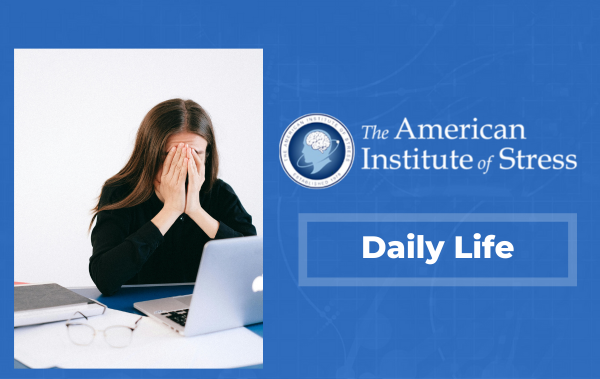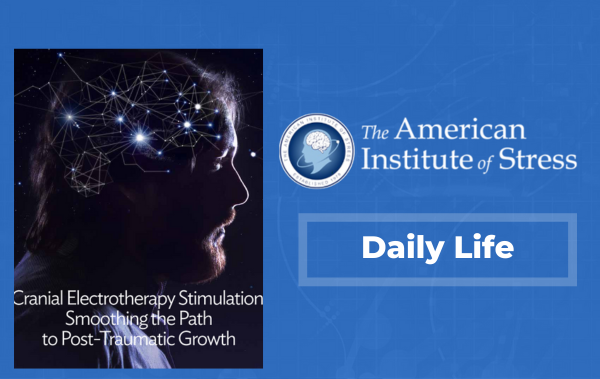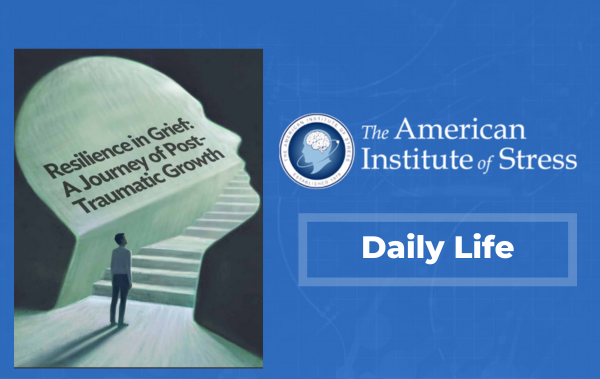Migraine headaches are one of the most common chronic conditions worldwide. Depending on the study, chronic migraines affect around 1 in 10 people, with twice as many sufferers being female.
Migraine headaches are disabling and cause significant loss of productivity and quality of life. Once they strike, a migraine can last anywhere between 4 and 72 hours. In addition to substantially reducing quality of life, frequent migraines can place one’s job at risk and prevent daily functioning.
Currently, the causes of migraine headaches are not well understood. Genetics are thought to play a role as well as environmental effects and changes in the way the brain interacts with the trigeminal nerve, a pain pathway.
MALADAPTIVE RESPONSE TO STRESS?

Senior woman with migraine behind a window with raindrops
It may be that migraine headaches are a result of the brain’s maladaptive response to stress. Researchers have found that when a migraine is triggered, the body’s responses (pain, increases in stress hormones, nausea, and vomiting) are in excess of what is normal. Even during migraine-free periods, a migraine sufferer’s brain is more excitable in response to stimuli.
If we understand how the brain operates on a neural level, we know that much of what is going on inside the brain is inhibitory. It is not optimal to have cascades of neurochemicals circulating through the brain. Overexcitability in the brain reduces the effectiveness of the calming mechanisms in the brain and increase pain sensitivity. What this means is the brain’s response to stimuli between attacks is heightened in an abnormal way.
We know the experience of stress is a significant factor in migraines. Work stress and home stress contribute to the likelihood of a migraine episode.
CHILDHOOD TRAUMA AND HEADACHES
We know that too much stress can change the brain and its reactivity to one’s inner environment, or thoughts, and one’s outer environment, or lights, sounds, and other stimuli. Adults who were exposed to ongoing stress or trauma while growing up often have an impaired ability to calm themselves both mentally and physiologically in response to stress.
A difficult childhood is not a life sentence of heightened stress and suffering. We can take steps to alter our response to stress.
When we look at migraine sufferers as a group, we see a connection between adverse childhood experiences (ACE) and migraine headaches. Examples of ACE are domestic violence, emotional neglect, emotional abuse, and sexual abuse.
Researchers have also begun to investigate the connection between adverse childhood experiences and headaches. Individuals who suffer from migraine headaches are more than twice as likely to have experienced ACEs such as domestic violence while growing up.
HOW TRAUMA RESULTS IN MIGRAINE: A POSSIBLE MECHANISM
The connection between childhood stress and migraines is likely linked, at least in part, through the hypothalamic-pituitary-adrenal axis (HPA axis).
The HPA axis is a complex set of interactions among the pituitary gland and the adrenal glands. This hypothalamic-pituitary-adrenal axis controls and regulates bodily processes related to stress reactions. It is easily understood as the fight or flight response. When an individual senses a threat, the body reacts appropriately. Energy is taken away from the digestive and immune systems and is moved to the muscles in order to get ready to run or fight. The adrenal glands are stimulated, and heart-rate, blood pressure, and breathing rates increase. This is an energy-expending state and not optimal for growth or restorative activities.
It is well understood that repeated exposure to stress and trauma during childhood often results in an impaired ability to regulate the stress response over one’s lifetime. Childhood trauma affects the HPA axis. What this means is that over time, the HPA axis loses its ability to effectively control the stress response. During times of upset, the person has an intense reaction that lasts too long. The result is overexposure of the body and brain to high levels of the stress hormone, cortisol.
Migraines may be tied to the same neurochemical conditions associated with trauma, depression, and anxiety, with an overactive stress response (de-regulation of the HPA axis) playing a role. An investigation into certain neurochemicals in migraine sufferers found abnormal patterns of hypothalamic hormonal secretion, a condition also associated with trauma and child abuse.
WHAT CAN WE DO TO HELP?
A difficult childhood is not a life sentence of heightened stress and suffering. We can take steps to alter our response to stress. Exercise and meditation have been shown to help calm the mind and body. These activities can begin to reverse the damage caused by an overactive HPA axis. Cognitive behavioral therapy (CBT) is also an effective tool for learning coping strategies and allows individuals to take greater control of reactions to daily life events that cause stress.
Research on migraines and childhood trauma is relatively new and is not well understood. However, if we understand that stress plays a role in migraines, taking steps to reduce stress may help reduce the frequency and duration of migraine episodes. At the very least, a reduction in stress can help us in every area of life, giving us more resilience to deal with a migraine once triggered.
Go to The American Institute of Stress
References:
- Anda, R., Tietjen, G., Schulman, E., Felitti, V., & Croft, J. (2010). Adverse childhood experiences and frequent headaches in adults. Headache: The Journal of Head and Face Pain, 50(9), 1473-1481. doi: 10.1111/j.1526-4610.2010.01756.x
- Brennenstuhl, S., & Fuller‐Thomson, E. (2015). The painful legacy of childhood violence: Migraine headaches among adult survivors of adverse childhood experiences. Headache: The Journal of Head and Face Pain, 55(7), 973-983. doi: 10.1111/head.12614
- Dumas, P. (2014). Calling in sick? Good conversations about migraine at work. Retrieved from https://migraineagain.com/calling-sick-good-conversations-about-migraine-work
- Exercise and stress: Get moving to manage stress. (2018). Retrieved from https://www.mayoclinic.org/healthy-lifestyle/stress-management/in-depth/exercise-and-stress/art-20044469
- Maleki, N., Becerra, L., & Borsook, D. (2012). Migraine: Maladaptive brain responses to stress. Headache: The Journal of Head and Face Pain, 52(2), 102-106. doi: 10.1111/j.1526-4610.2012.02241.x
- Migraine. (2018). Retrieved from https://www.mayoclinic.org/diseases-conditions/migraine-headache/symptoms-causes/syc-20360201
- Goadsby, P. J. (2009). Pathophysiology of migraine. Neurologic Clinics, 27(2), 335-360. doi: https://doi.org/10.1016/j.ncl.2008.11.012
- Lubin, E. (2018). Migraine headache FAQs. Retrieved from https://www.emedicinehealth.com/migraine_headache_faqs/article_em.htm
- Nelson, S. M., Cunningham, N. R., & Kashikar-Zuck, S. (2017). A conceptual framework for understanding the role of adverse childhood experiences in pediatric chronic pain. The Clinical Journal of Pain, 33(3), 264-270. doi: 10.1097/AJP.0000000000000397
- Peres, M. F. P., Sanchez del Rio, M., Seabra, M. L. V., Tufik, S., Abucham, J., Cipolla-Neto, J., Silberstein, S. D., & Zukerman, E. (2001). Hypothalamic involvement in chronic migraine. Journal of Neurology, Neurosurgery, and Psychiatry, 71, 747-751. Retrieved from https://www.ncbi.nlm.nih.gov/pmc/articles/PMC1737637/pdf/v071p00747.pdf
- Understanding the stress response. (2018). Harvard Health Publishing. Retrieved from https://www.health.harvard.edu/staying-healthy/understanding-the-stress-response
- Woldeamanuel, Y., & Cowan, R. (2015). Worldwide migraine epidemiology: Systematic review and meta-analysis of 302 community-based studies involving 6,216,995. Neurology, 86(16). Retrieved from http://n.neurology.org/content/86/16_Supplement/P6.100
© Copyright 2019 GoodTherapy.org. All rights reserved. Permission to publish granted by Fabiana Franco, PhD





